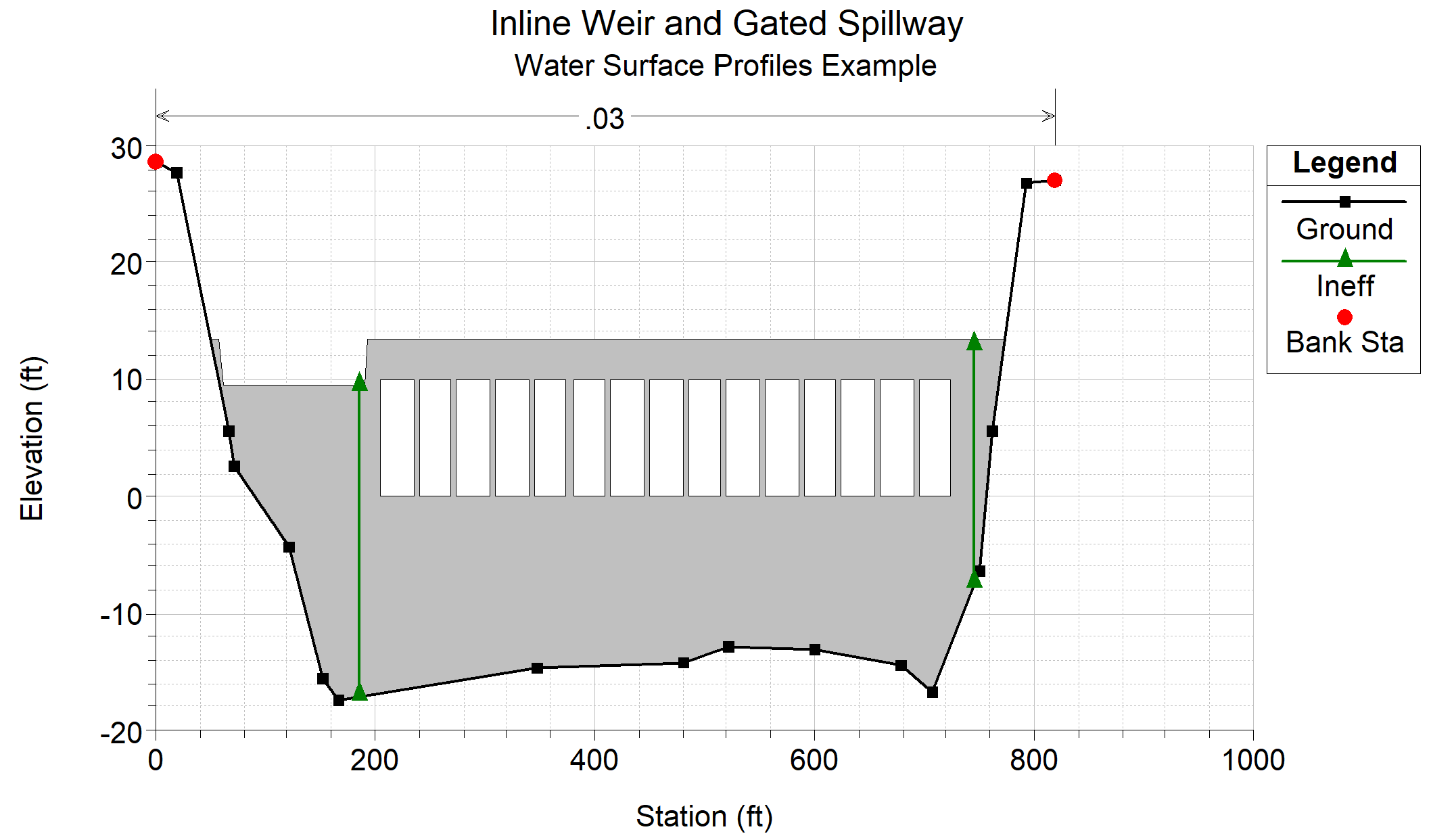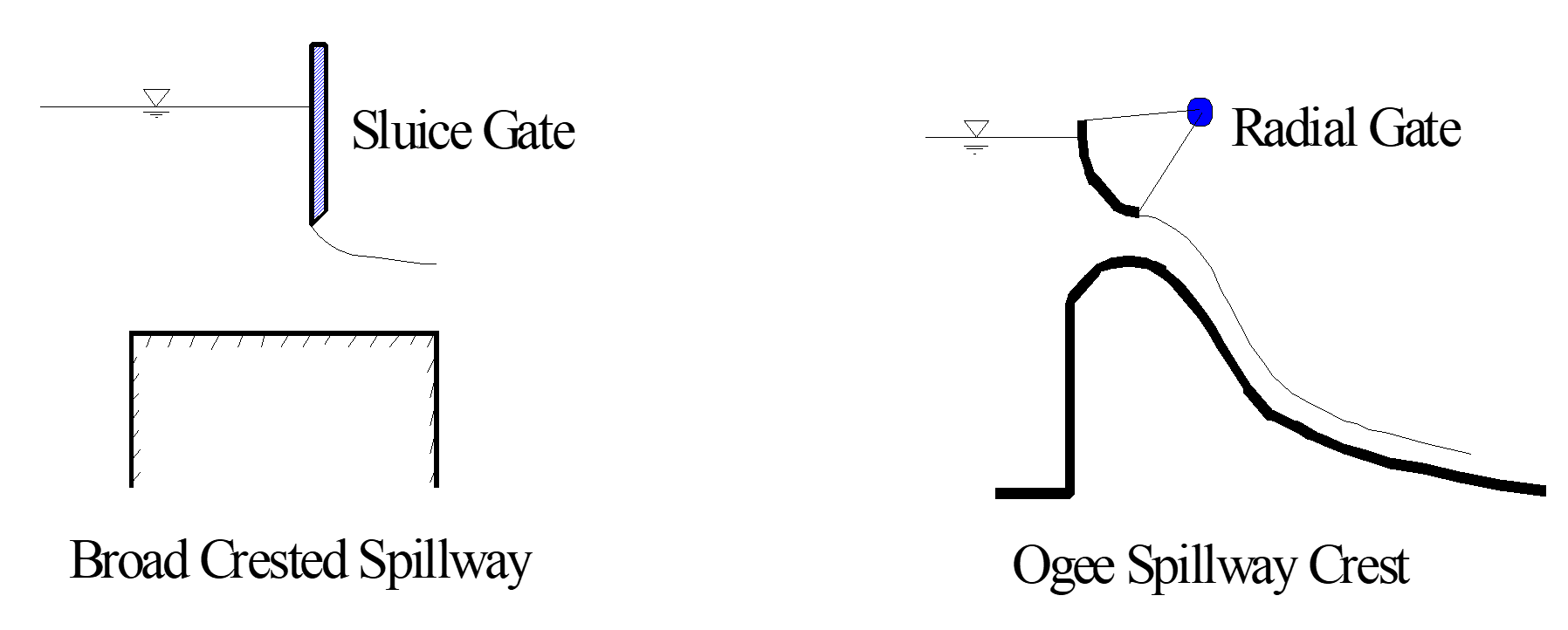The gated spillway and weir option within HEC-RAS can be used to model inline (structures across the main stream) or lateral (structures along the side of the stream) weirs, gated spillways, or a combination of both. An example of a dam with a gated spillways and overflow weir is shown in the figure below.

In the example shown in the figure above there are 15 identical gate openings and the entire top of the embankment is specified as an overflow weir.
Gated Spillways within HEC-RAS can be modeled as radial gates (often called tainter gates), vertical lift gates (sluice gates), overflow gates (open to the air or closed top), or a family of user defined rating curves. The equations used to model the gate openings can handle both submerged and unsubmerged conditions at the inlet and outlet of the gates. If the gates are opened far enough, such that unsubmerged conditions exist at the upstream end, the program automatically switches to a weir flow equation to calculate the hydraulics of the flow. The spillway crest through the gate openings can be specified as either an ogee crest shape, broad crested , or sharp crested. The program has the ability to calculate both free flowing and submerged weir flow through the gate openings. the figure below is a diagram of sluice and radial gate types with different spillway crests.

Up to 10 gate groups can be entered into the program at any one river crossing. Each gate group can have up to 25 identical gate openings. Identical gate openings must be the same gate type; size; elevation; and have identical gate coefficients. If anything about the gates is different, except their physical location across the stream, the gates must be entered as separate gate groups.
The overflow weir capability can be used by itself or in conjunction with the gated spillway option (as well as the other outlet types available in Inline and Lateral structures). The overflow weir is entered as a series of station and elevation points across the stream, which allows for complicated weir shapes. The user must specify if the weir is broad crested, ogee shape, or sharp crested. The software has the ability to account for submergence due to the downstream tailwater. Additionally, if the weir has an ogee shaped crest, the program can calculate the appropriate weir coefficient for a given design head. The weir coefficient will automatically be decreased or increased when the actual head is lower or higher than the design head.